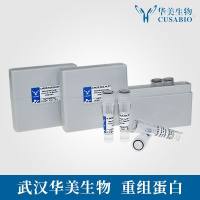Analysis of Mycobacterium-Infected Macrophages by Immunoelectron Microscopy and Cell Fractionation
互联网
528
The ability of pathogenic Mycobacterium to establish and maintain an infection in a host is dependent on their capacity to survive within phagocytes (1 –3 ). Studies conducted on macrophage infections in culture have provided considerable insight into the mechanisms developed by these bacteria to ensure their survival. However, macrophages in culture are considerably more permissive than the phagocyte in its correct tissue environment and one has to be aware that the capacity of the macrophage to function as both an antigen-presenting cell (inducing or sustaining a cellular immune response) and an immune effector cell (mediating an antimicrobial response following activation with cytokines) places certain provisos on interpretation of in vitro infection experiments (4 ,5 ). Despite this obvious caveat, our appreciation of the complex interplay between Mycobacterium spp. of varying degrees of virulence [M. tuberculosis , M. bovis (BCG) and M. avium ] and their host macrophage has benefited considerably from the recent application of modern cell biological techniques to studies of infected cells in culture.









